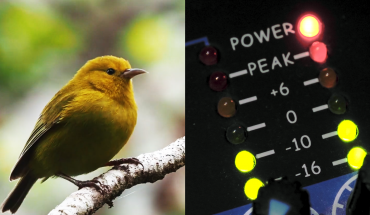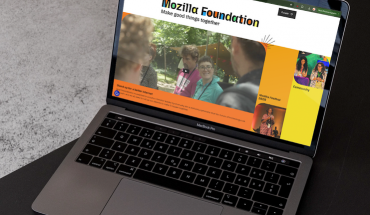Off-grid power solutions and alternate energy sources like solar panels and portable generators provide economic and environmentally sustainable options to today’s costly, often dirty, sources of electricity.
New power solutions and products also happen to be fuelling exciting new employment opportunities for male and female tech workers in multiple categories – and they are driving at least one Canadian family’s fantastic eco-adventures across North and Central America (where they’ve now built a dream home powered by the sun).
Innovation and integration in the alternate power sector have been growing for years now, with technological improvements making mobile and solar energy sourcing more convenient, more accessible, and more sustainable – at home or on the road.
In fact, emerging portable power and solar products are part of a growing industry sector, valued at more than a billion dollars (USD) and growing at an annual rate of nearly 20 per cent!
Off-grid solar power users now have access to powerful and portable energy sources that make use of new construction materials and techniques. There are new integrated data-driven tools to best manage power systems and monitor important and beneficial performance indicators like solar cell chemistry, battery charge levels, solar generation data, inverter stats and more.
An Exciting and Eco-Friendly Journey
It was this promise of the open road and the potential of an untethered life of adventure and exploration which drew a young Canadian couple to the world of alternate and solar power sources.
By partnering with a leading Canadian manufacturer of mobile power solutions, they’re living the dream: they’ve successfully converted an old RV into a modern solar powered home on wheels, they’ve installed solar panels on the roof of their new Costa Rican jungle home, and they’ve developed an engaging social media presence to describe it all!
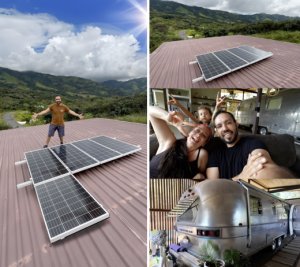
Canadians Kristen Sarah and Siya Zarrabi (and their child and their dog) share a wealth of tips and advice about how to get the most out of a solar powered lifestyle. Image courtesy Hopscotch the Globe.
Branded together as Hopscotch the Globe, Canadians Kristen Sarah and Siya Zarrabi (and their child and their dog) share a wealth of tips and advice about how to get the most out of the RV and tiny house lifestyle they’ve adopted, and how best to take advantage of new off-grid and alternate power sources.
Kristen’s background is in media and marketing; Siya is a self-described serial entrepreneur and professional adventurer; they both still call Toronto their base.
The pair first partnered with the Victoria, B.C.-based company Go Power! as part of their early efforts to convert an old recreational vehicle. (Founded in B.C. in 1996, Go Power! is now part of the Dometic Group, a Swedish firm that manufactures mobile living products.)
Eva Mitic has worked in the mobile power solutions space since 2005; now an executive at Go Power! | Dometic, she’s been working to propel the brand’s RV aftermarket while helping to build educational content and initiatives that make renewable energy solutions more accessible.
Her work to educate consumers about mobile power solutions and how they can fit such products into their lifestyle was the perfect foundation for a partnering with the two Canadian global hopscotchers.
“Kristen and Siya worked to build the perfect home on wheels that could sustain all their needs while on the road,” Eva Mitic recalls of their early efforts, “and let them travel to different remote parks, hidden travel gems, and more, all while having off-grid capabilities.”
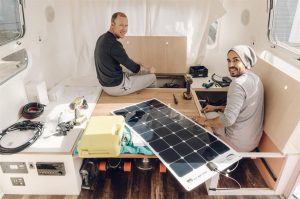
An old Airstream travel trailer undergoes a year-long renovation, which included installation of a solar panel powered electrical system. Image courtesy Hopscotch the Globe.
Having acquired a classic but road-worn old Airstream travel trailer (which they soon named “Luna”), the couple spent the better part of a year (and some $34,000 all told) to completely gut and renovate the vehicle. They designed and built a whole new interior, including kitchen space and hot water shower, while installing a solar-panel-driven power system to make their portable residence more suitable and comfortable for off-grid living.
The first Luna journey started here in Ontario, and it easily reached California, but that road trip only inspired the couple to go further: they eventually decided to create a more permanent off-grid home in the jungles of Costa Rica.
“Luna had provided them with the ultimate off-grid experience for many years, and they didn’t want to let it go. Once they decided on their forever home in Costa Rica, they reached out to our team again, wanting us to be part of this project and equip them with a mobile power solution system for their unplugged home,” Eva describes.
While the mobile power solution system equipped Luna with 500 watts of solar power, along with compatible power inverter, transfer switch, cable, and a solar controller, their off-grid system in their jungle home features four GP-PV-200-watt solar modules on the roof, along with two 250Ah lithium batteries and an inverter charger.
“They recently added a new upgraded solar panel,” Eva notes of the continuing work between Go Power! and Hopscotch the Globe, “bringing their total to 1,000 watts of solar on their roof, which allows them to power most of their essential items, including the washing machine, security cameras, lights, fans, plugs, internet, and refrigerator.
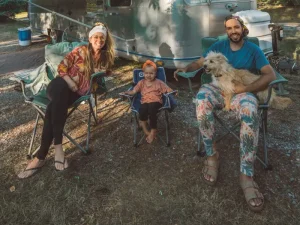
Left to right: Kristen, Kai, Siya, and Atlas (the pup). Kristen and Siya have documented their ‘powerful’ experiences building Luna and they’ve transformed their solar lifestyle journey into a series of Instagram posts and reels. Image courtesy Hopscotch the Globe.
“The system also includes a PowerTrak screen that functions as the smart hub of the whole system, showing solar controller information, inverter charger, and battery details for precise and easy maintenance,” she said. With RV-C (a communication protocol for monitoring and managing vehicles and power system status) and Bluetooth capabilities, products like PowerTrak integrate discrete solar power and energy storage systems into a cohesive network.
Kristen and Siya have documented their ‘powerful’ experiences building Luna and they’ve transformed their solar lifestyle journey into a series of Instagram posts and reels.
“It’s great to see how their various projects have come to life over the year,” Eva adds, “and even better to have been able to be a part of their travel journeys and as they graduated to their home ownership journey.”
A Personal and Professional Journey
For her part, Eva Mitec’s experience in the tech world of energy products and solar power has been a rewarding personal and professional journey.
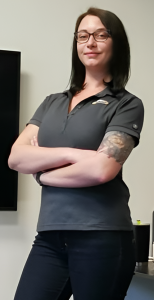
Eva Mitic has worked in the mobile power solutions space since 2005; she’s now an executive at Go Power! | Dometic. Supplied image.
“Yes, working in this space has its challenges. It is highly technical, often male-dominated, and fast-moving, but that is also what makes it rewarding,” she says. “It demands curiosity, resilience, and the ability to translate complexity into clarity. That is where I play a critical role, helping shape how technology is understood and adopted.”
What’s more, she says the sector’s growth means it is becoming more accessible.
“Solar, mobile energy, and sustainable tech are no longer niche. That growth creates opportunities, not just for engineers, but also for strategists, communicators, and creators.”
And for women.
“Women should absolutely see this as a space for them,” Eva says of the opportunities she sees, and not just in her sector. “Absolutely, I see women’s role in the tech industry growing. Not just in numbers, but in influence and visibility. Companies are recognizing that diverse teams drive better innovation and performance. That includes gender diversity. While it’s not as pervasive as I’d like, it’s gaining momentum.
“It’s not just about getting women into tech. It’s about giving them a voice and a seat at the table. I’ve been fortunate to work with—and build teams of—incredible women throughout my career. It’s an exciting time. I’m proud to be part of it. I have seen what is possible when women step into technical industries with confidence. We just need to keep showing up and carving out space for others to do the same.”
“The path forward is open,” she says of the opportunities for women in tech.
She probably said that to Kristen and Siya, too.
# # #


